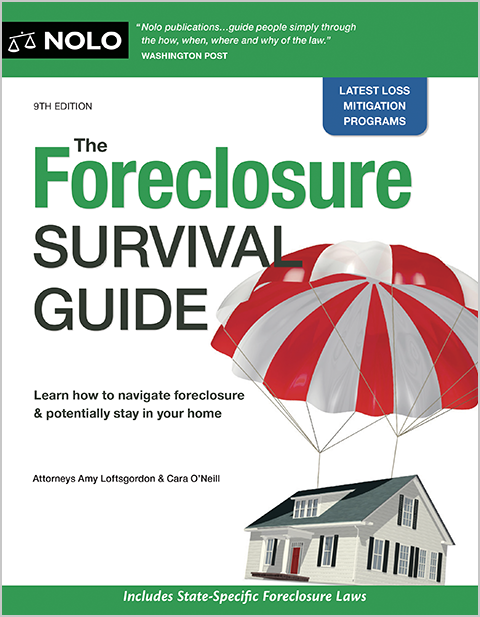Learn how to write an effective hardship letter for loss mitigation options like a short sale or loan modification.
If you're facing financial hardship and struggling to keep up with your mortgage payments, pursuing a short sale might be a viable way to avoid foreclosure. An important part of the application process for getting a loss mitigation option such as a short sale, as well as other foreclosure alternatives, like a loan modification, is submitting a hardship letter or hardship affidavit to your lender. This document explains the personal and financial challenges that have made it difficult to meet your mortgage obligations.
In this article, you'll learn how to write a compelling hardship letter or fill out a hardship affidavit, what qualifies as a valid hardship, and common mistakes to avoid when completing this step.
- Common Hardships That Qualify for a Short Sale (And Other Loss Mitigation Options)
- What Is a Hardship Letter for a Short Sale?
- How to Write an Effective Mortgage Hardship Letter
- Hardship Letter Format: What to Include
- Length of the Hardship Letter
- Mistakes to Avoid in Your Hardship Letter
- How to Fill Out a Mortgage Hardship Affidavit
- Why Your Hardship Letter Matters in the Short Sale Process
- Getting Help With Your Hardship Letter or Affidavit
- Key Takeaways: Writing a Hardship Letter for a Short Sale
Common Hardships That Qualify for a Short Sale (And Other Loss Mitigation Options)
A "hardship" is a circumstance beyond your control that results in a situation where you can't afford to make the required mortgage payments.
Hardships that usually qualify for short sale consideration include:
- job loss
- a spouse's death
- reduction in pay or work hours
- job transfer
- medical expenses from a serious illness for the homeowner or a family member
- separation or divorce
- an adjustable interest rate reset
- military service, or
- a natural disaster.
What Is a Hardship Letter for a Short Sale?
A "hardship letter" is a letter you write to your lender explaining the circumstances of your hardship. The letter should give the lender a clear picture of your current financial situation and explain what led to your financial difficulties. While this article specifically addresses short sales, the process of creating a hardship letter is the same, no matter what alternative to foreclosure you're seeking, whether it's a loan modification, short sale, or deed in lieu of foreclosure.
The hardship letter is a normal part of the loss mitigation process. It's often something you must provide along with pay stubs, tax returns, a financial statement, bank statements, and any other information that the lender wants.
Some lenders will have you fill out a hardship form (a hardship "affidavit") or a hardship statement instead of writing a letter. So check with your loan servicer before preparing a letter.
How to Write an Effective Mortgage Hardship Letter
Often, people don't spend much time thinking about their hardship letter or copy a sample letter from the internet. It's okay to use a template to help you get started, but you should include some personal information relevant to your situation. Loan servicers have to review thousands of these letters, and the ones that aren't genuine are easily spotted.
Hardship Letter Format: What to Include
Here's what your letter should generally include:
Your Contact Information
Be sure to include your name, address, phone number, loan number, and the date on the top of the letter.
Introduction
Start your letter with a sentence that informs the lender of the purpose of your letter. For example, "I would like to be approved for a short sale."
Body of the Letter
In the body of the letter, state the hardship that led you to fall behind on your mortgage payments. Explain to the lender what happened and why it was beyond your control. Keep your explanation brief. The goal of the hardship letter is to explain to the lender the nature of your hardship.
Conclusion of the Letter
To end your letter, let the lender know that you want to live up to the financial obligation of the mortgage, but you can't, and that a short sale could be your only solution to avoid foreclosure. Say something like "a short sale appears to be the only reasonable alternative to foreclosure."
If you're working with a HUD-approved housing counselor, which is a good idea if you're facing a foreclosure, include the counselor's name, agency, and contact information. Providing this information lets the lender know you've explored all avenues to avoid foreclosure.
Length of the Hardship Letter
The letter shouldn't exceed one page in length—shorter is fine. The letter should be concise, including only the facts relevant to your case.
Mistakes to Avoid in Your Hardship Letter
When you write the hardship letter, don't include anything that would hurt your situation. Here are some examples of things you shouldn't say in the letter:
- Don't say that your situation is your lender's fault or that their employees are incompetent.
- Don't state that your financial situation will probably improve. If the lender thinks you might soon have the financial means to repay part of the debt, you might not be approved for loss mitigation.
- Don't mention that you can access funds that aren't shown elsewhere in your short sale application. For example, don't say something like "I could borrow $10,000 from my mother," because then the lender might require a contribution from you before approving a short sale.
How to Fill Out a Mortgage Hardship Affidavit
Filling out a hardship affidavit form is pretty easy. You usually just have to attest that you're having difficulty making the mortgage payments and check the box that best describes your hardship and perhaps provide a short explanation. For example:
◊ My household income has been reduced due to reduced pay
or hours, a decline in business earnings, death, disability, or divorce.
◊ My monthly debt payments are excessive, and I'm overextended with
my creditors.
◊ My expenses have increased due to monthly mortgage payment
reset, high medical or health care costs, uninsured losses, increased
utilities or property taxes.
◊ My cash reserves, including all liquid assets, are insufficient to maintain
my current mortgage payment and cover basic living expenses at the
same time.
◊ Other reason I can't make my mortgage payments:__________________________
Why Your Hardship Letter Matters in the Short Sale Process
With a short sale, the lender will evaluate whether the amount they'll receive in the short sale is as much as they expect from selling the property following a foreclosure. If it is beneficial for the lender to do a short sale and you meet the criteria, you'll be approved. The hardship letter or affidavit is merely part of the process.
Getting Help With Your Hardship Letter or Affidavit
If you need help with your hardship letter or affidavit, arranging a short sale, or need more information about the process, consider talking to a foreclosure attorney or a HUD-approved housing counselor.
Key Takeaways: Writing a Hardship Letter for a Short Sale
If you're preparing a hardship letter as part of a short sale or loss mitigation application, keep these key points in mind to ensure your application is clear, effective, and lender-ready:
- A "short sale" allows homeowners to sell their property for less than the mortgage balance to avoid foreclosure. But another loss mitigation option, such as a loan modification, might be a better option. Explore all of your alternatives. A foreclosure attorney and HUD-approved housing counselor can help you evaluate alternatives.
- Lenders usually require a hardship letter or affidavit as part of the loss mitigation process.
- A financial hardship must be legitimate, involuntary, and well-documented. For example, a job loss, medical emergency, or divorce are usually considered legitimate hardships.
- Your hardship letter should be honest, concise, and under one page. It should explain your current financial situation and what caused it. Don't include unnecessary or damaging details, such as blaming the lender or mentioning outside financial help might be available.
- Some lenders may require a hardship affidavit form instead of a written letter. Check with your loan servicer.
- Working with a HUD-approved housing counselor or foreclosure attorney can improve your chances of approval for a loss mitigation option.
Ultimately, writing a hardship letter or filling out a hardship affidavit is just one step in your loss mitigation efforts. Completing this task, along with avoiding common mistakes and obstacles, and providing accurate and complete documentation in your loss mitigation application, can improve your chances of lender approval and avoiding foreclosure.
- Common Hardships That Qualify for a Short Sale (And Other Loss Mitigation Options)
- What Is a Hardship Letter for a Short Sale?
- How to Write an Effective Mortgage Hardship Letter
- Hardship Letter Format: What to Include
- Length of the Hardship Letter
- Mistakes to Avoid in Your Hardship Letter
- How to Fill Out a Mortgage Hardship Affidavit
- Why Your Hardship Letter Matters in the Short Sale Process
- Getting Help With Your Hardship Letter or Affidavit
- Key Takeaways: Writing a Hardship Letter for a Short Sale

